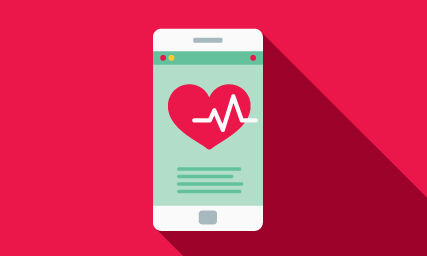Men are twice as likely as women to have a heart attack. Perhaps that’s why so much outreach and education related to heart disease and the associated risks and symptoms are targeted at men, while far less is done to communicate these same issues to women.
In reality, tens of thousands of women also suffer from heart attacks each year. An average of 1 in 5 women die of heart disease in the U.S., making it the nation’s leading cause of mortality for women.
“A huge proportion of American women don’t know that their leading cause of death is heart disease,” says Dr. Ildiko Agoston, a cardiologist at University Health and associate professor of cardiology at UT Health San Antonio. “This needs to change.”
Not only may women be less aware of their risk of getting heart disease, but they also face tougher recoveries. They have been underserved by a lack of education about heart attack symptoms, which manifest differently in women than in men.
3 Heart Attack Facts
Dr. Agoston wants women to know three crucial things about their heart health:
- They may experience different heart attack symptoms than men
- Some risk factors can lie dormant for years
- It’s especially important that they act preventively, since they have fewer heart attack treatment options than men
Women Have Different Heart Attack Symptoms
“When I was a medical student,” Dr. Agoston recalls, “the visual for a heart attack was always a man clutching his chest. That’s because people generally imagine two things about heart attacks: men and chest pain. That can be a hard notion to change.”
We most commonly associate heart attacks with crushing chest pain because we’re more familiar with men’s symptoms. Heart attack symptoms in women may include a range of subtler warning signs, including:
- Shortness of breath
- Nausea or vomiting
- Dizziness or lightheadedness
- Anxiety
- Indigestion
- Back or jaw pain
Many of these seemingly harmless symptoms often go ignored or are assumed to be other health issues such as acid reflux, anxiety attacks or the flu. It’s crucial that women, especially those at risk of heart disease, know that these symptoms could be the sign of something much more serious.
Some Risk Factors Lie Dormant for Years
Although many factors contributing to heart disease are well documented, women face several unique or heightened challenges they may not know about. Becoming familiar with these can be crucial in preventing potential future heart problems.
Preeclampsia and gestational diabetes are complications associated with pregnancy. What women may not realize is that although these conditions are temporary, they could increase their risk of having a heart attack.
Women who experience preeclampsia, which is characterized by high blood pressure, are twice as likely to suffer from heart disease and stroke later in their life — especially following menopause.
Gestational diabetes, which causes high blood-sugar levels during pregnancy, has been linked to a 43% greater risk of heart attack and stroke among women later in life.
“After pregnancy, the symptoms of preeclampsia and gestational diabetes disappear,” Dr. Agoston says. “Unfortunately, that experience was a failed stress test. Life just revealed what can happen to your body in the future.”
Taking oral contraceptives is another risk factor unique to women. It can increase blood pressure, which elevates the risk of heart attacks and stroke.
Being a smoker is a major risk factor, and it is even more dangerous for women than for men. In fact, women who smoke are 25% more likely to develop heart disease than male smokers.
A family history of heart disease can increase a woman’s risk of heart attack. Typically, this means having a father or brother who’s had a heart attack before the age of 55 or a mother or sister who’s had one before the age of 65. It’s important for women to learn their family history and communicate this with their doctors to accurately identify their risk factors.
Talk to Your Doctor
Talking to a heart doctor or cardiologist is the most important step women can take to understand and alleviate their potential heart health risks.
Annual checkups are key, but heart health should be a year-round discussion. That means checking blood pressure, blood sugar and glucose levels regularly and consulting with a doctor on what lifestyle changes and medications may be necessary.
It’s especially important for women to act preventively and keep their hearts healthy. Due to limitations in available therapies, women tend to fare worse than men after a heart attack.
“Due to anatomical differences — women’s hearts and arteries are smaller — it’s harder to put in a stent,” Dr. Agoston says. “Medication may be the only option. Therefore, prevention is key. It’s very important to recognize the signs of a heart attack and show up early enough to get treated.”
Cardiology at University Health
Talk to your doctor about your heart health. Learn more about the programs and services offered at University Health's Cardiovascular Center.

Heart disease is the leading cause of death for both men and women.
Our free online risk assessment only takes a few minutes. It will help you better understand your risk of developing heart disease and how you may be able to lower it.





